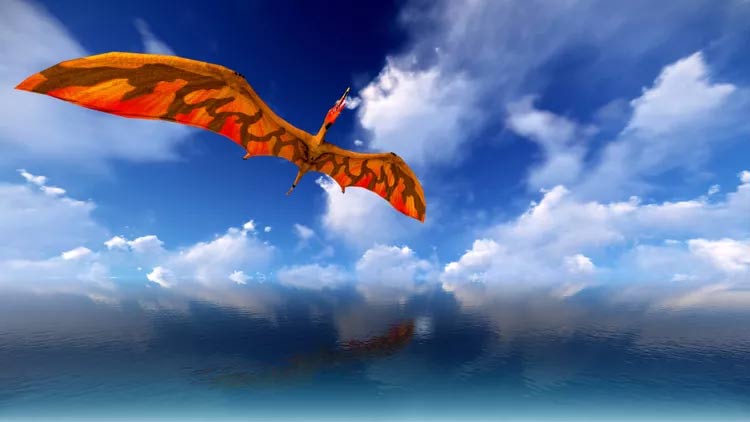Can dragons really fly and breathe fire?
Believe it or not, flying and fire-breathing dragons are completely real. Here are some things that science has researched about flying and fire-breathing dragons.

You've probably heard that dragons are mythical creatures. After all, a flying, fire-breathing reptile couldn't possibly exist in real life, right? It's true that no fire-breathing dragon has ever been discovered, but flying lizard-like creatures do exist in the fossil record. Some can be found in the wild today. Let's take a look at the secrets of this species.
How big is the flying dragon?
Scientists generally agree that modern birds descended from flying dinosaurs, so there is no debate about whether dragons could fly. The question is whether they were large enough to hunt humans and livestock. The answer is yes, they once could!
The Late Cretaceous pterosaur Quetzlcoatlus northropi was one of the largest known flying animals. Estimates of its size vary, but even the most conservative estimates put its wingspan at 11 meters (36 feet), with a weight of around 200 to 250 kilograms (440 to 550 pounds). In other words, it weighed roughly as much as a modern tiger – which could certainly take down a human or a goat.
There are several theories as to why modern birds are not as large as prehistoric dinosaurs. Some scientists believe that the energy required to maintain feathers determines size. Others suggest that changes in the Earth's climate and atmospheric composition are to blame.
Meet the modern flying dragon
While ancient dragons could be large enough to carry a sheep or a human, modern dragons feed on insects and occasionally birds and small mammals. These are iguanian lizards, which belong to the family Agamidae. This family includes domesticated bearded dragons, Chinese water dragons, and the wild Draco.
Draco spp. are flying dragons. Draco are masters of gliding. These lizards glide up to 60 meters (200 feet) by stretching their legs and spreading their wings. The lizards use their tails and neck wings to balance and control their landing. You can find living flying dragons in South Asia. The largest are only 20 centimeters (7.9 inches) long, so you don't have to worry about being eaten.

Can a wingless dragon fly?
While European dragons are winged giants, Asian dragons are more like snakes with legs. Most of us think of snakes as terrestrial, but there are snakes that 'fly' in the sense that they can glide through the air for long distances. How far? Basically, these snakes can glide through the air for the length of a football field or twice the length of an Olympic swimming pool! The Asian Chrysopelea 'flew' up to 100 meters (330 feet) by flattening its body and twisting to maximize lift. Scientists have found that the optimal angle for a snake-like glide is 25 degrees, with the snake's head pointing up and its tail pointing down.
Although wingless dragons technically cannot fly, they can glide for very long distances. If the creature could somehow store lighter-than-air gases, it could master the ability to fly.
Can dragons breathe fire?
To date, no fire-breathing animal has been found. However, it is not impossible for an animal to breathe fire. Bombardier beetles (family Carabidae) store hydroquinone and hydrogen peroxide in their abdomens, which they spray when threatened. These chemicals mix in the air and, in an exothermic (heat-releasing) chemical reaction, essentially spray the irritating boiling liquid at the pest.
Remember, living things are always creating flammable compounds, reactions, and catalysts. Even humans breathe in more oxygen than they use. Hydrogen peroxide is a common byproduct of metabolism. Acids are used for digestion. Methane is a flammable byproduct of digestion. Catalase improves the efficiency of chemical reactions.
A dragon could store the chemicals it needs until it needs them, force them out, and ignite them by chemical or mechanical means. Mechanical ignition could be as simple as creating a spark by crushing piezoelectric crystals. Piezoelectric materials, like combustible chemicals, have been found in animals. Examples include tooth enamel and dentin, dried bones, and tendons.

So, breathing fire is certainly possible. While it has not been observed, that does not mean that no species has yet developed the ability. However, it is entirely possible that a fire-breathing creature could do so from its anus or a special structure in its mouth.
You should read it
- How fast can a fire spread?
- Instructions for setting up auto-fire of Fire VNG
- Admire the magic 'dancing' pillar of fire in the rare sulfur fire
- A simple 'breathing' exercise dispels fatigue and calms after a stressful day of work
- The police instructed to extinguish the fire when the gas tank was on fire
- Komodo assassin dragon slayed a giant buffalo buffalo with a cup
 How to cool your car as fast as possible on a hot summer day
How to cool your car as fast as possible on a hot summer day How to Increase Water Pressure in Your Home Without Calling a Professional
How to Increase Water Pressure in Your Home Without Calling a Professional How to Update Printer Firmware Now to Stop Hackers
How to Update Printer Firmware Now to Stop Hackers How to reset Windows Security settings on Windows
How to reset Windows Security settings on Windows Zodiac signs possess wisdom from past lives
Zodiac signs possess wisdom from past lives 4 Reasons Using AI Chatbots as Search Engines Is a Big Mistake
4 Reasons Using AI Chatbots as Search Engines Is a Big Mistake